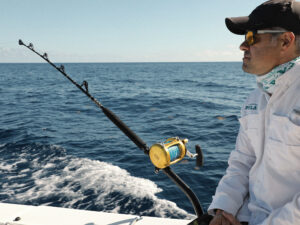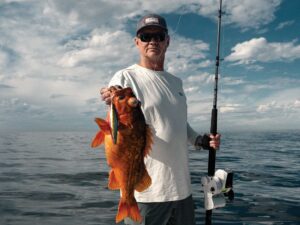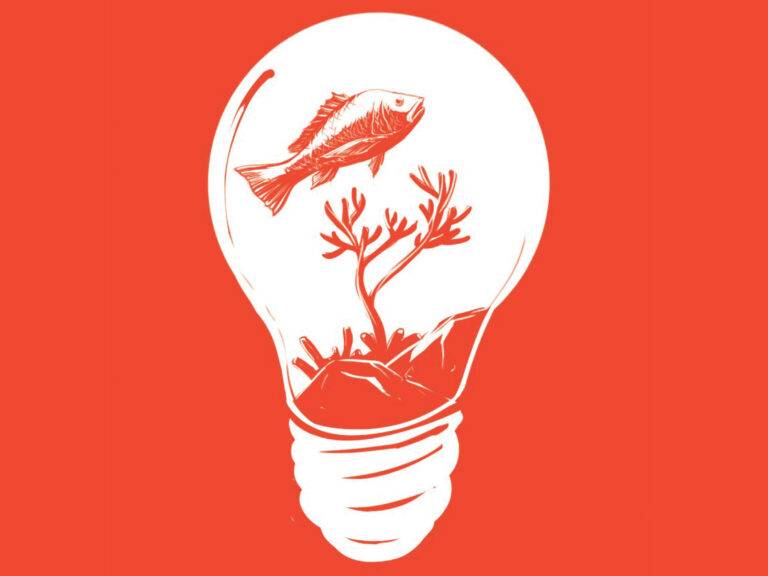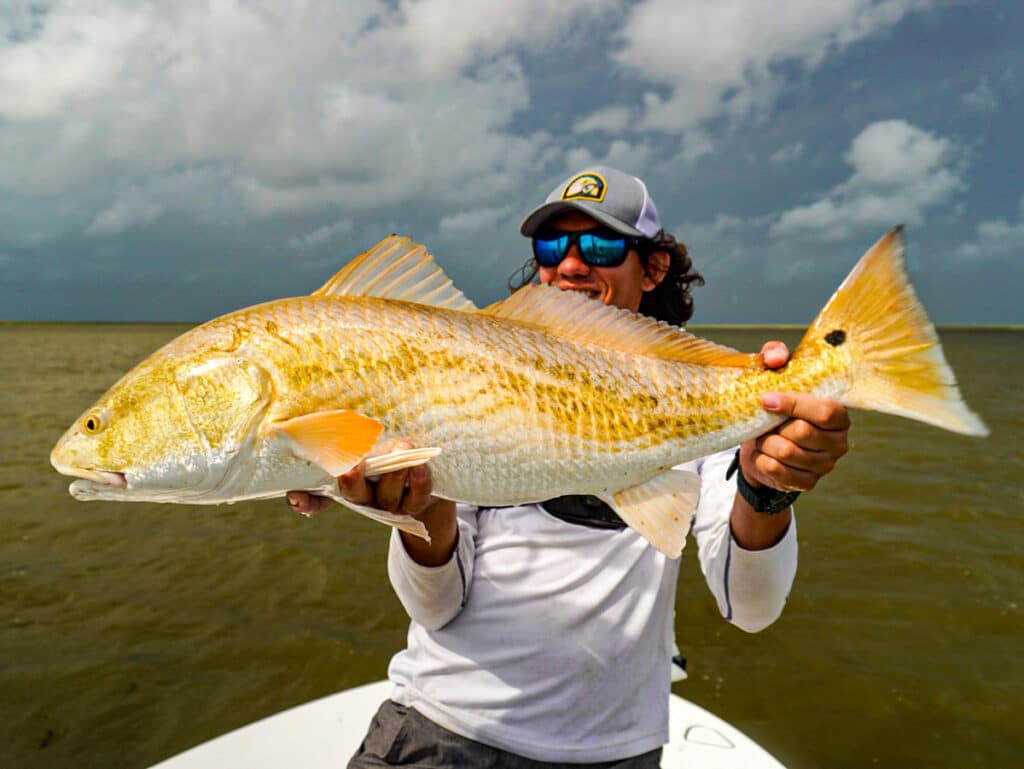
Fishing Louisiana’s vast array of bays, marshes and other inshore waters is something every shallow-water saltwater and freshwater angler must experience. Redfish are the most popular inshore fish in the country, and the state shaped like a boot is a mecca for this coveted gamefish species.
With what seems like endless creeks, ponds, bays, marsh and grass to explore, southern Louisiana is one of the last remaining coastal areas that’s still relatively undeveloped. That means there’s plenty of untouched water full of fish that haven’t seen a lure in months. The most intriguing part of this sight fishery is the best local techniques pull from bass fishing, not traditional saltwater flats fishing. Unsurprising, you’re likely to catch largemouth bass while fishing for species such as redfish or speckled trout.
After a recent Salt Water Sportsman Adventures trip to the Redfish Lodge in Venice, Louisiana, I quickly learned that a bass fisherman might excel at targeting Louisiana reds more so than a traditional saltwater flats angler like myself. I enjoy casting big, noisy topwater lures to species such as snook, tarpon and jacks — those plugs would have been laughed out of the marsh.
Not only is the landscape similar to something you might find on the banks of Lake Okeechobee, but the catching methods are comparable to techniques that bass anglers have used for decades. The three primary lures we used to catch redfish and black drum were spinnerbaits, creature baits and topwater frogs.
We used Strike King baits on this trip, as Capt. Mike Frenette (owner operator of the lodge) has a strong relationship with the lure company. In particular, we used the Strike King Redfish Magic spinnerbait, and swimbaits such as the Strike King Flood Minnow. These exact waters also beg for a creature bait, such as the Rage Craw, pinned to a jig. Lastly, although I didn’t personally use this method on the trip, topwater frogs like the KVD Sexy Frog produce quality reds and black drum.
Saltwater Spinnerbaits

Picture this waterscape: Scattered grass, Roseau cane and piles of vegetation everywhere you look, all held in place by muddy bottom. That’s where these bronze Louisiana redfish hide and that’s why tried-and-true bass fishing methods translate so well to catching them.
The guides at the Redfish Lodge have a combined 50-plus years of experience in these waters. They explained that the spinnerbait is the best way to catch both redfish and black drum. These saltwater spinnerbaits pair a soft plastic (not a skirt) with a blade. The captains are convinced the fish eat it because it imitates the movements of a crab. Black drum are notorious for eating only crustaceans — not baitfish — so the theory has strong merit.
Redfish use their lateral line like a sixth sense. They can feel the vibrations around them as they navigate the often-murky waters. The spinnerbaits not only have visual appeal, they also create a substantial amount of subsurface vibration. That’s why drum can’t resist — it triggers a reaction bite. Whether sight casting or blind casting, the spinnerbait is an extremely effective method for catching both redfish and black drum. Make sure this lure is always tied to one of your rods when exploring the marsh.
Creature Baits Catch Redfish
Creature baits also work extremely well, in particular, something that resembles a small minnow, crab or crawfish. Anything that can bounce the bottom with a jig when you spot a fish. With how dense the weeds and grass are in the marshes, creature baits work best when sight fishing as opposed to blind casting. Even after you’re able to spot a tail or fish movement, you still need to execute a well-placed cast to get them to eat. Cast your bait on their nose and make sure it’s able to fall quickly.
Something like a Strike King Flood Minnow does wonders when targeting these fish. That exact bait also does well for largemouth bass. You don’t have much time in the strike zone before your lure is snotted-up from vegetation, so make those presentations count. If you can place a soft-plastic creature bait near a redfish or black drum’s face, chances are they’ll hit it before spooking.
Topwater Frogs in the Louisiana Marsh
Topwater frogs are one of the most prolific largemouth bass baits in the history of the sport. Although I personally wasn’t able to get one on the topwater frog during this trip, the guides I fished with assured me it’s one of the most effective ways to catch redfish. These fish are foraging in such dense vegetation that it’s not uncommon for them to eat just about anything at the surface. Sure, they might not know exactly what it is, but a baitfish, crab, shrimp or even a frog is a tasty treat.
Just like a bass angler peppers grass beds, weeds, and lily pads with a frog, redfish anglers should do the same. Louisiana anglers often have the benefit of seeing the drum’s fins or wake before having to make a cast. The most crucial attribute of the topwater frog is that it’s weedless. Traditional topwater baits like poppers and spooks might work, but you wouldn’t be able to work them more than a couple of feet before the trebles snagged grass.
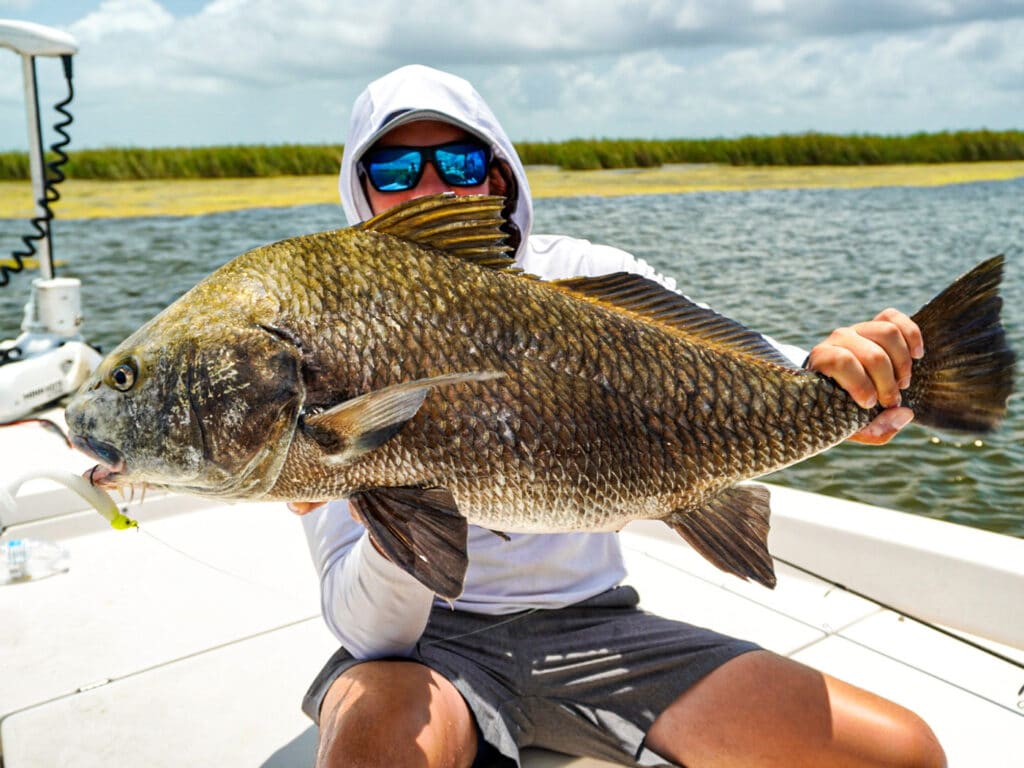
Louisiana redfish are not shy like their Florida cousins. If they hear something, they’ll head toward it. Is it a meal? Is it another redfish eating something? That’s why Louisiana captains tell anglers not to lead fish with a lure — just cast that bait right at their mouth.
Sight fishing for redfish and black drum in the Louisiana marsh is an incredible experience that’s sure to exhilarate any angler. Bass anglers will feel right at home, and their baitcasters might actually get a drag work out too! I’d recommend visitors hire guides that know the waters well. Channels and creeks range from deep to mud bars, and the topography is ever changing. Don’t get your boat stuck in a bad spot.

